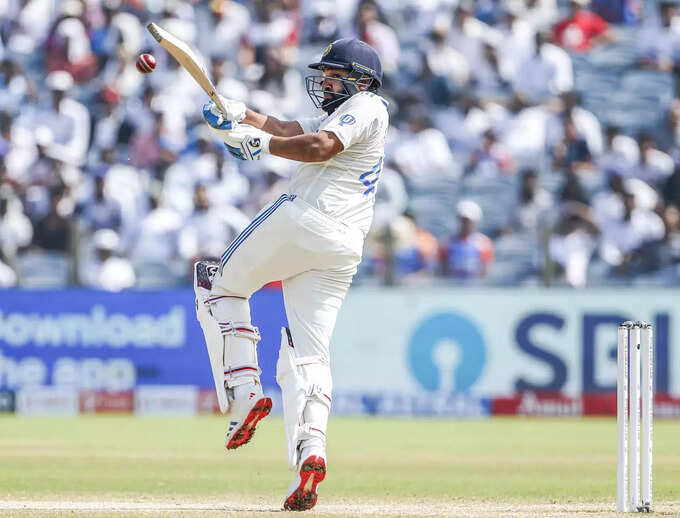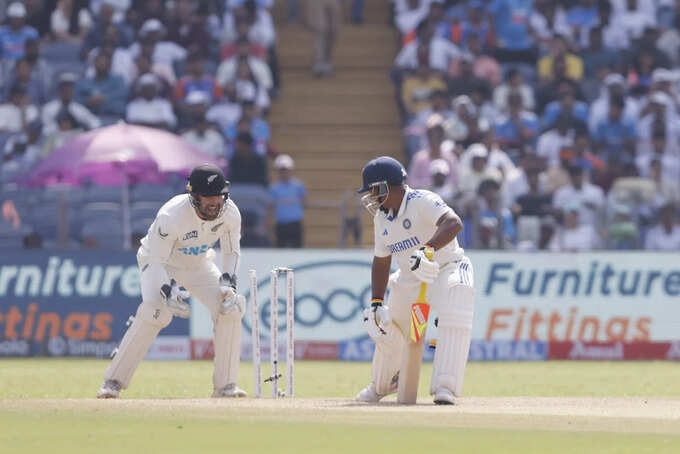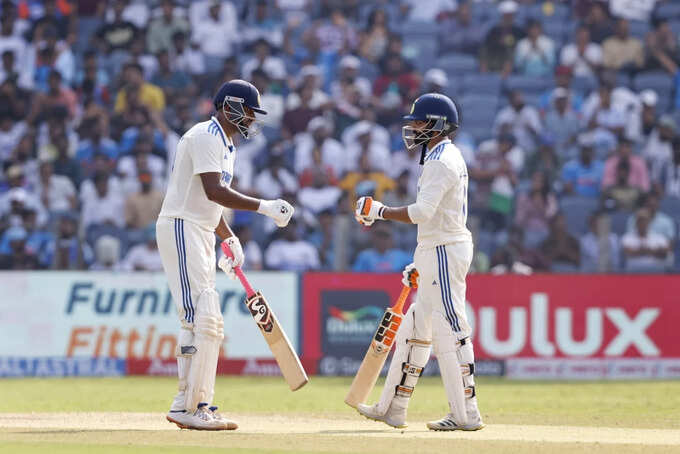India faced a significant setback in the second Test match against New Zealand in Pune, ending in a 113-run loss and putting India 0-2 down in the three-match series. This outcome shocked Indian fans and has impacted India’s path to the World Test Championship final. Despite strong expectations, several key players underperformed or made critical missteps, which played a big role in India’s defeat. Here’s a breakdown of the top five players whose individual performances and strategies affected the outcome.
1. Rohit Sharma’s Leadership and Batting Under the Scanner
Rohit Sharma, known for his solid leadership and skillful batting, had a tough time both as a captain and as a player in this Test series. Rohit’s decisions, especially fielding choices and the batting order, came under scrutiny in the first match, while his performance with the bat faltered in both games. With only a few runs to his name and missteps in handling key bowlers, Rohit was unable to guide the team effectively in Pune. His lack of substantial runs, combined with unsteady captaincy, added to the pressure and paved the way for New Zealand’s success.

2. Virat Kohli Struggles with Spin, Raises Concerns
A world-class player, Virat Kohli has often been the backbone of India’s batting lineup. However, his recent form has been a concern, with Kohli unable to find consistency even before this series. In the Pune Test, Kohli’s batting was especially shaky against spin, a skill he’s typically well-equipped to handle. Across both innings, he managed only 18 runs, leaving a major gap in India’s batting order. This performance, coupled with earlier struggles against Bangladesh, has put Kohli’s form under the spotlight, signaling a potential weakness in India’s otherwise robust lineup.

3. Sarfaraz Khan’s Inconsistency in Crucial Moments
Sarfaraz Khan’s knock of 150 in the Bengaluru Test raised high expectations, especially since he’s shown immense potential in previous matches. However, in the Pune Test, his lack of runs became evident when he needed to step up. Scoring only 20 runs across both innings, Sarfaraz’s performance didn’t match the requirements of the high-stakes match, contributing to the mounting pressure on India’s middle order. His inability to stabilize the innings underscored the importance of consistency, especially in crucial games against tougher opponents.

4. Fast Bowling Unit Fails to Create Impact
India’s fast-bowling attack, including Jasprit Bumrah and Akashdeep Singh, was expected to challenge New Zealand’s batting lineup effectively. However, in the Pune Test, the pacers were unable to secure even a single wicket, leaving much of the pressure on the spin department. In contrast, New Zealand’s pace attack, led by Tim Southee, created early breakthroughs, which highlighted the effectiveness of a balanced attack. The Indian pacers’ inability to make a significant impact allowed New Zealand’s batsmen to build steady partnerships and set a challenging target, putting India on the back foot.

5. Ashwin and Jadeja’s Missed Batting Contributions
The spin-friendly Pune pitch set the stage for Ravichandran Ashwin and Ravindra Jadeja to shine with the ball. Both delivered solid bowling performances, but India also needed them to contribute with the bat to chase New Zealand’s score. Ashwin, especially, struggled to make any substantial runs, and Jadeja’s efforts, though steady, were not enough to shift the game in India’s favor. Their previous batting form, particularly against teams like Bangladesh, had set high expectations, but in this match, both players were unable to anchor the lower order, impacting India’s chase significantly.



